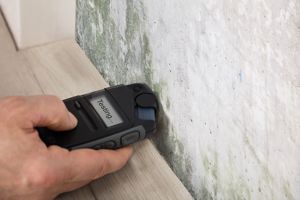Not all mold inspections are created equal!
Anybody can claim to be able to do a mold inspection, but that doesn’t mean they’ll do a good job. Some mold remediation companies do a quick inspection that doesn’t really tell them much. They don’t use a lab to test for the species of mold and don’t bother testing the air quality. There are even some unsavory types that take advantage of people by exaggerating the problem and suggesting comprehensive mold removal services that aren’t really needed. So how can you be sure that it that will catch what it needs to? A quality mold remediation company should always start with a comprehensive inspection that will take a little bit of time to complete because of several types of tests they will run.
What does a typical high-quality mold inspection include?
Having certified mold technicians perform the work on your house already gives you a leg up against the microbe. Typically, a mold inspection will consist of a visual inspection, sampling visible mold, air quality tests and a mold lab test.
A visual mold inspection comes first
Quick, what’s the fastest way to check for mold? Just look! Of course, that won’t catch microscopic bits in the air, but it’s the best place to start. But an experienced mold tester sees things differently than other people. They know the telltale signs of mold like spots and stains on the walls and carpets and know what odors are usually associated with mold. This kind of testing isn’t invasive, and many mold remediation companies even offer it for free!
Checking for obvious mold and moisture damage
Clumps of mold obviously need to be removed and the sections cleaned. But large accumulations of mold often suggest a larger problem. Mold loves warm and moist areas, and because of this, water is often the culprit. It could be getting in through roof damage or a leaky pipe. If the mold inspector suspects one of these problems, they may recommend a full house inspection from a reliable home inspector. 
Testing the mold levels in the air
The mold in the air can get into your lungs! While many kinds of mold are benign, some produce harmful mycotoxins that can cause health problems in some individuals. Part of the mold tests should include both indoor and outdoor mold levels. This gives a level of comparison and can also give clues to how the mold is getting in.
Swab samples to determine mold species
There are literally thousands of different species of mold. And some are more prevalent and harmful than others. Your mold tester should collect a sample for analysis and send it to a lab to decide the best way to proceed. Once the samples return, they’ll have all the information they need to form a strategy to get rid of the existing harmful mold and make sure it doesn’t come back. The mold inspection company likely offers mold remediation as well, but should always let you be in charge about whether or not now is a good time for you.
